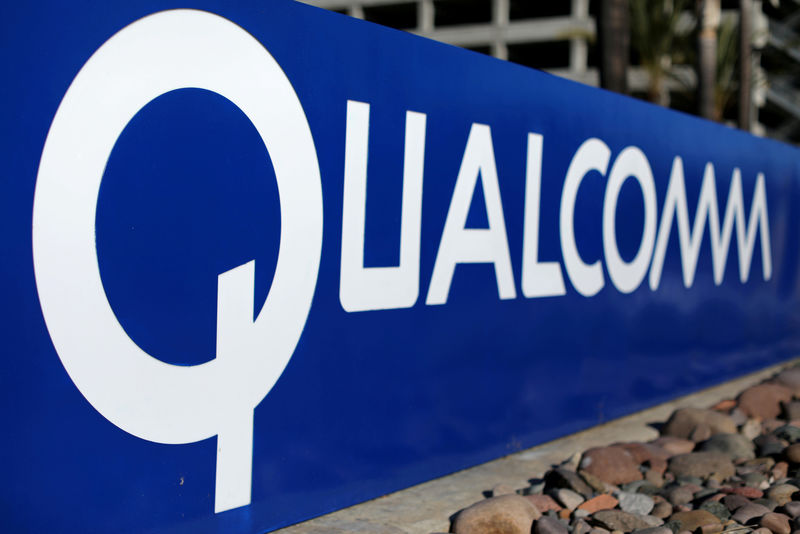By Stephen Nellis
(Reuters) - Qualcomm (NASDAQ:QCOM) Inc said Thursday it expects to bring in more than $1 billion in sales this fiscal year from semiconductor chips from smart watches, connected speakers and other devices outside its core business of chips for mobile phones.
The figure is the most recent data point the company has released to prove it can diversify its revenue sources after its $44 billion deal to buy Dutch chipmaker NXP Semiconductors fell apart last month.
The sales of so-called "internet of things," or IoT, chips is about one fifth of the $5 billion in revenue that Qualcomm CEO Steve Mollenkopf said the San Diego chipmaker believes it will make outside the mobile phone market.
Qualcomm dominates the market for processor chips for phones as well as modem chips that let phones connect to wireless data networks, counting firms like Samsung Electronics (KS:005930) Co and Apple Inc (NASDAQ:AAPL) as major customers.
The sales of smart phones has flattened in recent years though and are growing slowly. To respond to that broader trend, Qualcomm had sought to purchase NXP, a dominant supplier to the automotive market, where car makers are adding more chips to vehicles each year. That deal fell apart last month after failing to secure approval from Chinese regulators.
Now, Mollenkopf is under pressure from investors to show he can expand Qualcomm's sales without NXP's help.
While Qualcomm had disclosed that it expected $5 billion in non-mobile chip sales this year, up from $3 billion last year, it had not given any information about the composition of that $5 billion until Thursday. The rest of the $5 billion beyond IoT chips comes from networking chips, Qualcomm's own automotive chips and a few other areas.
Qualcomm's chips for the IoT market typically power small, battery-powered devices that are becoming more common.
In a statement released ahead of a planned briefing with analysts on its progress, Qualcomm said its chips are now in more than 200 kinds of so-called wearable devices and 1,300 different wireless headsets, earbuds and wireless speakers.
The company also said it expects revenue growth from chips for wireless, internet-connected cameras to increase 120 percent this year versus last year, though it did not give an absolute dollar figure.
